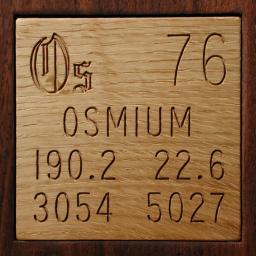 Antique phonograph needle. Antique phonograph needle.
People playing antique phonograph cylinders (the kind that are played acoustically with no electronics between the needle and the speaker) care a lot about their needles. Probably this is because every time they play a cylinder, an irreplaceable historical artifact is irreparably damaged a little bit more, how much depending on what needle you're using.
Fortunately, some people are transferring and archiving the recordings. The sound for this sample is a short excerpt of a wax cylinder recording taken from the website of a person who offers to transfer wax recordings to CD in exchange for a copy of them.
In any case, the preferred material for needles is of course diamond, with sapphire a good second. But, as was very nicely explained in the letter that came with this fine needle, if you're going to use a metal needle to get a certain kind of tone, an osmium one will last much longer, and leave fewer shards of metal stuck in the grooves, than will a steel needle.
My microscopic examination reveals no joints in the metal, and Randall Anderson, the source, explains as follows:
"Yes they are all osmium. The tungsten ones usually have just a tip, or a central shaft set in brass, but the osmium ones are usually all the way. The thicker the needle the louder the tone, thus they come in soft, medium, and loud tone. The last of the manufacturers went out of business in the late 1970's. I bought out their final inventory. Only NOS (New Old Stock) exist at this point."
On the other hand, the needle is quite unmistakably attracted to a magnet, which it should not be if it were solid osmium. It might be plated, or it might be one of several osmium/iron alloys that are discussed in connection with phonograph needles.
Preliminary analysis by x-ray fluorescence spectroscopy at the Center for Microanalysis of Materials, University of Illinois (partially supported by the U.S. Department of Energy under grant DEFG02-91-ER45439) indicates that there is absolutely no osmium in this needle. Not the slightest ghost of a trace. But, this is a surface analysis only and it's possible the machine was missing the tip of the needle, so some hope remains: I plan further testing after I learn more about the x-ray beam's exact location within the sample area of the machine. What the machine did see was 60% iron, 40% nickel.
Source: eBay seller hmv
Contributor: Theodore Gray
Acquired: 12 July, 2002
Text Updated: 11 August, 2007
Price: $9
Size: 0.5"
Purity: 0%
|
| 
|
|